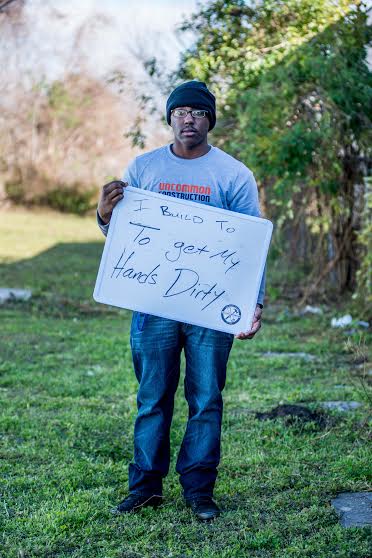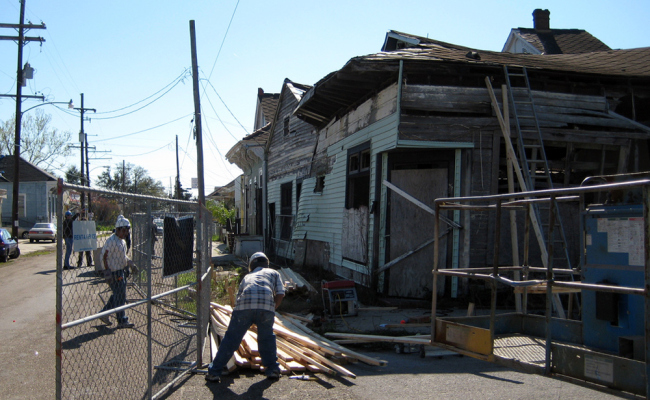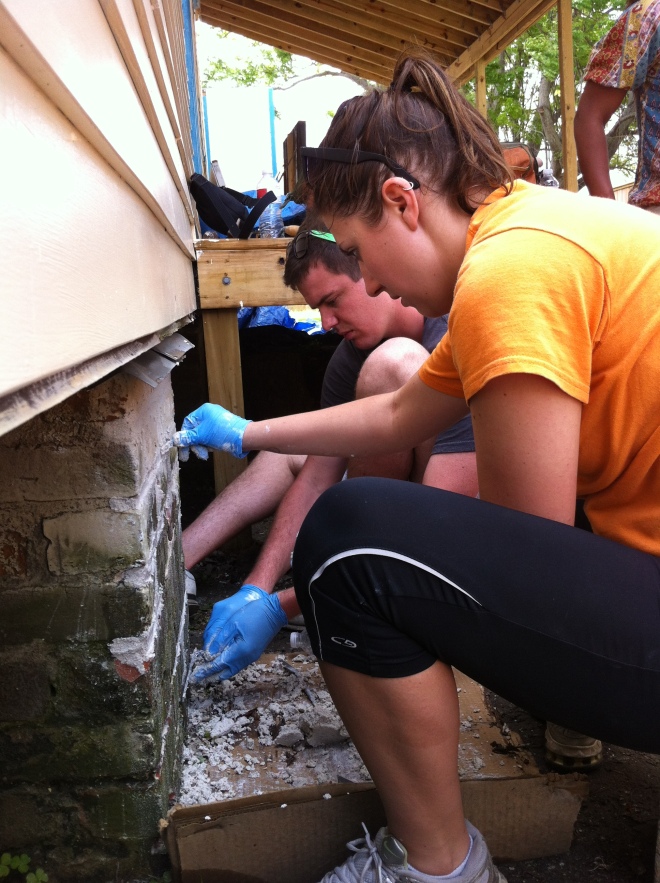
Aaron Frumin and the unCommon Construction crew. All of the incredible photographs featured in this post were taken by high school students. For more information on these talented photographers, visit http://gigsy.co.
In 2005, Aaron Frumin threw his hands up, dropped out of college and joined the Red Cross to respond to Hurricane Katrina. Once his extended term was up, he still wasn’t ready to return to a desk so he worked as a day laborer. He then went on to lead volunteers with AmeriCorps, finished school, and joined Teach for America. After basically joining every hands-on do-gooder organization in the country, it became clear that while he loved teaching, he hated the walls of a classroom.

For the Spring 2016 session, 10 of the 25 applicants were female. YES.
So, as Aaron puts it, he decided to start a program that lets students build their own classroom walls. He recognized that there was a desperate need for skilled workers in Louisiana, and while the Department of Education has been trying to address this issue, those programs didn’t seem to be dealing with some of the core issues that are preventing people from stable employment. There are plenty of workforce training programs out there, but very few tackle the soft skills needed to really get and keep a job.
This is where Aaron’s unique combination of hands-on construction work and his understanding of systematic failures in education is invaluable and unique. He’s not throwing money at the problem–and he’ll surely corroborate the fact that he doesn’t have any money to throw–but instead, he digs in deeper to get to the root issues and starts from there. And speaking of money, his hardworking apprentices are paid for their time. As they should be. There are far too many exploitative training programs out there that benefit from the time and labor of those who need the money most.

“These students can go into whatever specialized trades they want with this foundation, but I think it’s essential to start them with construction so they can have an immediate sense of accomplishment. Seeing what you’ve created is powerful.”
Aaron started unCommon Construction (uCC) just a year ago and is addressing this labor and education crisis in three ways:
- Apprenticeships: Through after school and weekend sessions, high school students from diverse neighborhoods and schools build a house from start to finish over the course of four months. In this selective program, youth earn weekly pay and high school credit while developing transferrable job skills, and gaining valuable experience and leadership skills.
- Pop-up Shop Class: To spark further interest in construction and involve more youth in our programs, unCommon Construction provides services to schools in the form of a “pop up” Shop Class. During these sessions, uCC staff facilitates hands-on, engaging construction experiences and classes for students on the school’s campus. Examples from previous sessions include birdhouses, sawhorses, benches, and flower boxes.
- Post-Secondary Placement & Recruitment: uCC excels at providing the youth with high quality training and exposure to the construction industry and beyond. Through partnerships with local construction companies, training facilities and colleges, we provide youth with the opportunity to more successfully transition from school to the workforce and/or post-secondary education.

This Spring, uCC is expanding to partner with four high schools. They’ve received 25 applications, including 10 girls and 15 boys ages 16-20. Five uCC alumni are returning for another semester. As you can see from the pictures, the students are into the work and are thoughtful about their time with the program. As Aaron explained, “You have to invest in your community. The students are the product, not the house. The house is just the curriculum.”

The ToolMade Project can’t help but be partial to this student and his sentiments. For more on this crew, and for more photography from the incredible photography students that helped with this post, check back next month.













